The privacy screen garden I created at the end of the driveway a few weeks ago should have been an easy project from a plant selection standpoint. It was just four plants: an evergreen, a multi-stem tree, a shrub and a grass. It is, by far, the most restraint I’ve ever shown when planting a garden. It took Mr. Much More Patient and I two and a half days to prepare and plant that garden. But it took much longer to find the plants that went there.
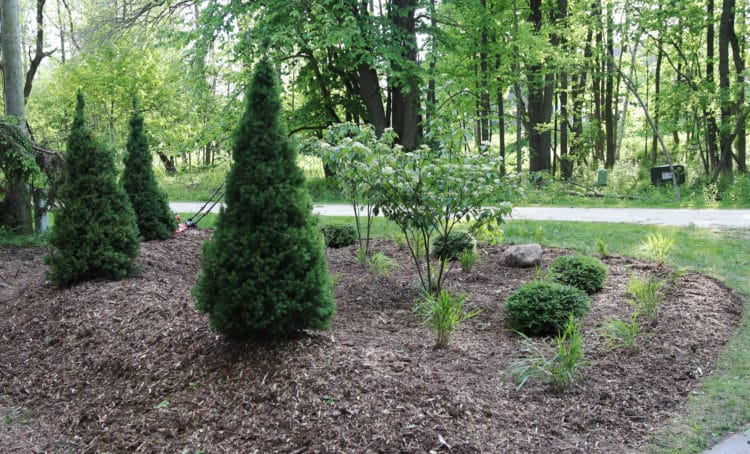
So what was the problem? Well, it’s one thing to research the plants you want; it’s quite another to find them.
This has been a source of frustration for me for years. There are amazing plants out there, but it’s nearly impossible to find them locally. I’m willing to (and often do) drive up to an hour to nurseries, which covers the biggest metropolitan area in the state of Wisconsin, but most stock only the most basic plants. The fact is, at least here, the independent garden centers tend to compete with the big box stores by carrying the most common plants. I understand this strategy; few people are walking into garden centers asking for plants by their botanical name and looking for a specific cultivar. I know I’m the exception, but I also know that many would do their customers a great service by helping them find better plants that aren’t the same as what they see at all their neighbors’ houses.
I don’t want to turn this into a diatribe against the way garden centers near me run their businesses because I know it’s a very difficult. But the fact is, unless you live in an area with a few excellent and inventive garden centers, researching a plant online may not be the best place to start.
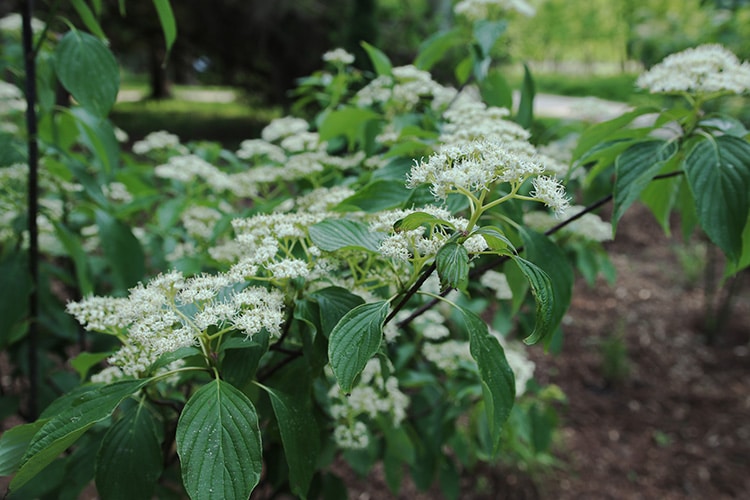
Given that, here’s the way I now search for plants that I’m going to buy locally (I’ll get into online plant buying in a bit):
No matter where or how you are buying plants there are a few things that are non-negotiable. The vast majority of the time, you must choose a plant that will grow in your zone. The exception to this is if you are growing in a very specific microclimate and even then you should understand you’re taking an additional risk by pushing the zone. (You can check your USDA growing zone here.)
The next non-negotiable consideration is the amount of light you’ll be growing in. Be honest with yourself! I have fooled myself into thinking that there was more sun in an area than there was just so I could try to grow a full-sun plant and it rarely turns out well.
This includes things like the soil type if it’s notable or unusual (think boggy or very sandy) and other concerns. In the case of our privacy screen garden, it was imperative that the plants be deer resistant. We have a lot of deer here and I can fight them off with various methods close to the house, but there’s no way I’d be able to keep them away from plants this far from where we (and the dogs) live. Other considerations could be salt tolerance, either growing in a marine environment or near a road where road salt is used in winter and could be splashed on the plants.
This is sort of the basic and fun part of plant selection. Evergreen or deciduous? Tree, shrub, perennial or annual? How much maintenance are you OK with committing to? Are flowers important? Do you have a specific color palette in mind? Do you want plants to perform a particular service, such as adding screening, attracting pollinators, providing food or habitat for wildlife or create a certain feeling?
You probably don’t need to think about this much; you probably already have the vision in your head, but it’s worth making a mental note of what it is about the plants in that vision that you liked because it will come into play later.
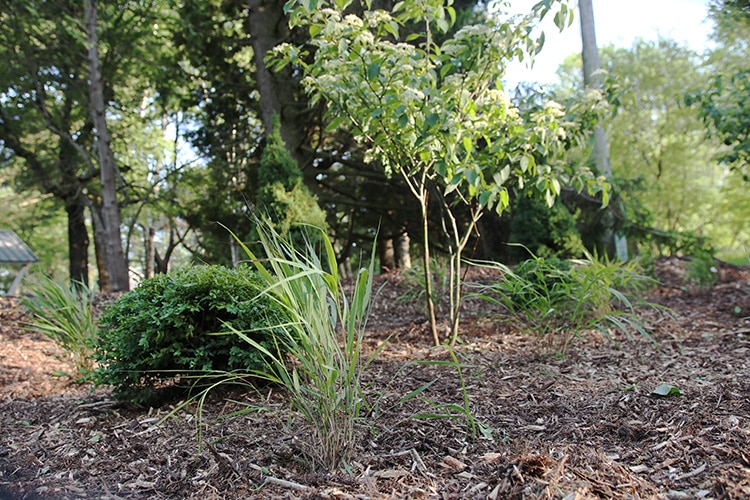
This is the part where my suggestions for how to find plants differ from conventional wisdom. This is the stage where I used to pore over magazines, books and websites to find the perfect plant that fit all my needs and wants. But I’ve learned that that part comes later.
For instance, for the garden at the end of the driveway, I knew I wanted an evergreen that fit the following criteria:
- Hardy to at least zone 5.
- Happy in part sun.
- Deer resistant.
- Will top out at 15 or so feet in 15 or so years.
- Was at least 4 or 5 feet tall at the time of purchase.
That was it. I wasn’t fussy about form, color or texture, which I thought would make the search relatively easy.
Then I hit the plant lists of several garden centers I frequent. I’m so appreciative of garden centers that publish their plant lists (or at least lists of trees and shrubs) because it makes it a lot easier to scope things out. I always follow up with a phone call before expecting a plant to be there, however. Then there are trips to garden centers and phone calls to others farther away. Some garden centers are helpful and can offer suggestions if you give them your criteria (tip: ask for the nursery manager, a lot of seasonal help don’t have the experience to do this).
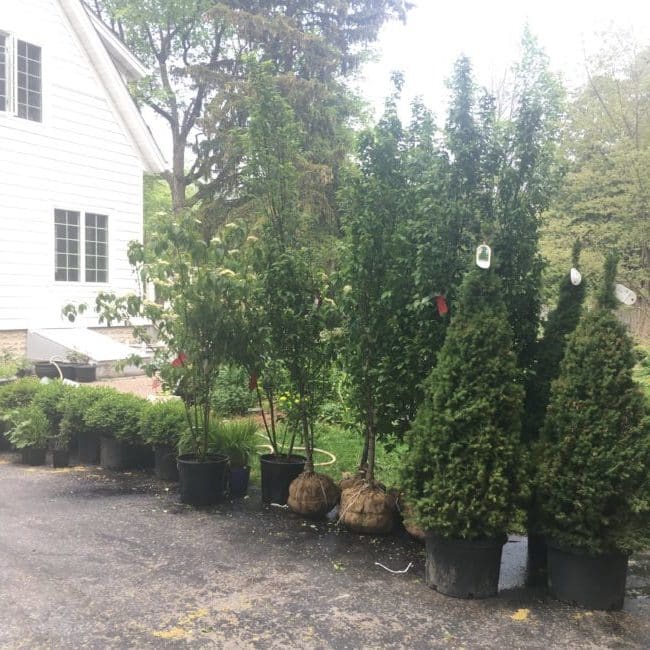
The time to hop online or consult books or magazines on a specific plant doesn’t come until now. And I’ll tell you why: There is no point wasting time researching plants that you can’t get. So it’s actually easier to find out what is available to you that meets your criteria, the go research those plants and compare them.
When it comes to researching plants online, I typically start with information from botanic gardens (Missouri Botanical Garden and the Chicago Botanic Garden are excellent sources, particularly for midwestern and, to a certain extent, East Coast gardens) and university-related sites, found by adding .edu to your search terms. I also search for personal experience with a plant, found on blogs and online forums, as well as photos of a plant.
Now’s the time to go back to the garden center and make your purchase.
I will offer a caveat to all these steps. There are some excellent garden centers out there who will be able to do much of this work for you in one trip to the nursery if you get to the right person and they have good stock. If you find this unicorn of a gardening eden, give them your business and thank them (profusely) for their help. Then make that knowledgable employee your friend, so you can call or request to talk to them in the future. Baked goods may help with this, but I’ve never gotten that far so I can’t say for sure.
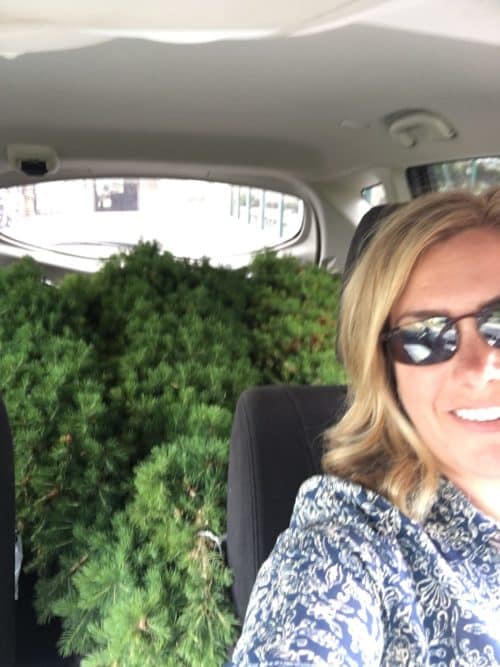
Online nurseries, particularly specialist nurseries, have amazing offerings and they are the place to go when you are looking for something different and you’re willing to wait for a small plant to grow a bit (or you’re OK paying a lot in shipping). I often buy plants online but for me it would be difficult to do a larger project with plants entirely purchased online.
The new garden at the end of the driveway turned out well; I’m quite happy with it. But I ended up with evergreens I never thought I would have: dwarf Alberta spruces. These trees are ubiquitous, even maligned because people are sick of seeing them. They aren’t really notable in a lot of ways and perhaps not the world’s most attractive tree, but I landed on them because they were one of two trees I found that would meet my criteria for evergreens in that location. Size and part sun turned out to be the most difficult items to check off the list, but the dwarf Albertas ticked both those boxes.
Getting to those spruces took many hours, but it doesn’t have to be that hard. Start with what you know you can get, then figure out what will work for your garden.
[custom_code name=”amazon”]
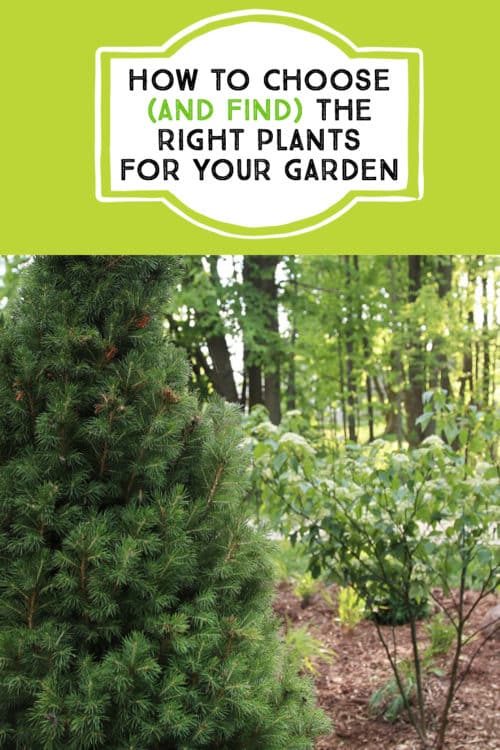


12 Responses
I couldn’t agree more with everything you said. We are lucky to be near Gerten’s in Minneapolis and they have a really massive collection of trees and shrubs, so I usually start at their website (knowing full well they are my best shot to find what I want/need). There’s no sense falling in love with something I can’t get my grubby little hands on! But I do wish there were more options and/or ways for local nurseries to carry different stock than the big box stores- I can’t imagine how tough the competition is for them!
It’s even worse if (like you and me) one reads UK blogs and magazines. So many great cultivars we will never see for sale here.We have been lucky with some unusual trees Olbrich had at their plant sales years ago. Now all the specialty items at that sale are for containers.
We tried to do the same thing you are working on, creating some privacy screening along our lot lines. I’m writing because we too planted a pagoda dogwood since it met our requirements. Much to our dismay and sadness the deer have totally destroyed it. Last fall they used it during the rut, breaking off half the branches in one night. Yesterday we discovered they have been back; this time to nearly defoliate what remains of it. We were told, after the fact, that we should have and will need to cage it every fall to protect it from additional deer damage, but no one thought they would be a problem mid-summer. I guess the deer didn’t get the message. I wanted to give you a heads up and I hope you have better luck. Ours was about the same size as the one you planted. I had hoped it would recover and grow back but now I am doubtful that we will ever get to enjoy it or that it will provide any screening.
I did lots of research selecting our plants, trees and shrubs, using the same criteria and sources that you did. We ended up choosing Junipers because they are deer resistant and don’t normally get winter burn, if they have plenty of moisture in the fall before frost. However, finding them has been difficult. Johnson’s Star Juniper and Hetzii Junipers seem like good ones. Left in their natural shape both makes a good screen, however so may nurseries insist on over pruning them and they end up as nothing more than poles, making them unsuitable for our purpose.
Oh wow … thank you for that bit of information. We’ve never had a problem with rut-related deer damage (just the eating variety), but I will definitely give these some protection because they are far enough from the comings and goings near the house for some buck to have his way with.
I had junipers on the short list but I talked to the very knowledgable folks at Johnson’s Nursery and they said I shouldn’t even consider attempting to grow one in part sun (vs. full sun). I was hoping I could push it a bit, but it sounded like it’d be taking a chance. Great info! Thank you for sharing.
Lost 7 cryptomeria three years ago that were to be screening of a more wooded area to rutting deer. Absolutely destroyed them. Same thing happens with forsythia and ornamental cherry trees. I just prune them best I can each year and hope for the best.
Love this post. I’m fortunate to live in an area (Twin Cities) where there are nurseries of all types in every direction. Even still it’s difficult sometimes to find what I want. Btw, I love dwarf Alberta Spruce, common or not. ? Happy Gardening!
I just want the nurseries to have everything I want all the time! That’s not so much to ask is it? 😉
We had a small garden center in Va and tried to provide some more unusual plants to our customers and personal help with selection of right plant for the right place. Loved it and let so many nice people but eventually found we could not compete with the big box stores opening in the area. Also found some of the larger plant companies seemed to be flooding the market with their cultivars(all patented). I am very sorry to see this happening. I now use mail order and specialty nurseries in North Carolina where we have moved but know not every state has as many sources. Master Gardener and garden clubs plant sales can be a good place to find good local grown plants.
I can’t imagine how difficult it must be for a small independent garden center to compete with big boxes, especially now when it’s so difficult to find employees. Great suggestion to scope out local plant sales!
I love my local garden club plant sales, they can indeed be another great source for plants, both common and unusual.
I so agree with your statement of ‘start with what you can get’. It is so frustrating seeing some plant in a magazine or someone’s garden that you read about that sounds like the perfect plant and then try to find it locally is not possible.
I giggled about you stating that you were allergic to the plants in your vehicle. ha.. I think I am allergic to every plant that I love. ha..
It took me a LONG time to learn that lesson!